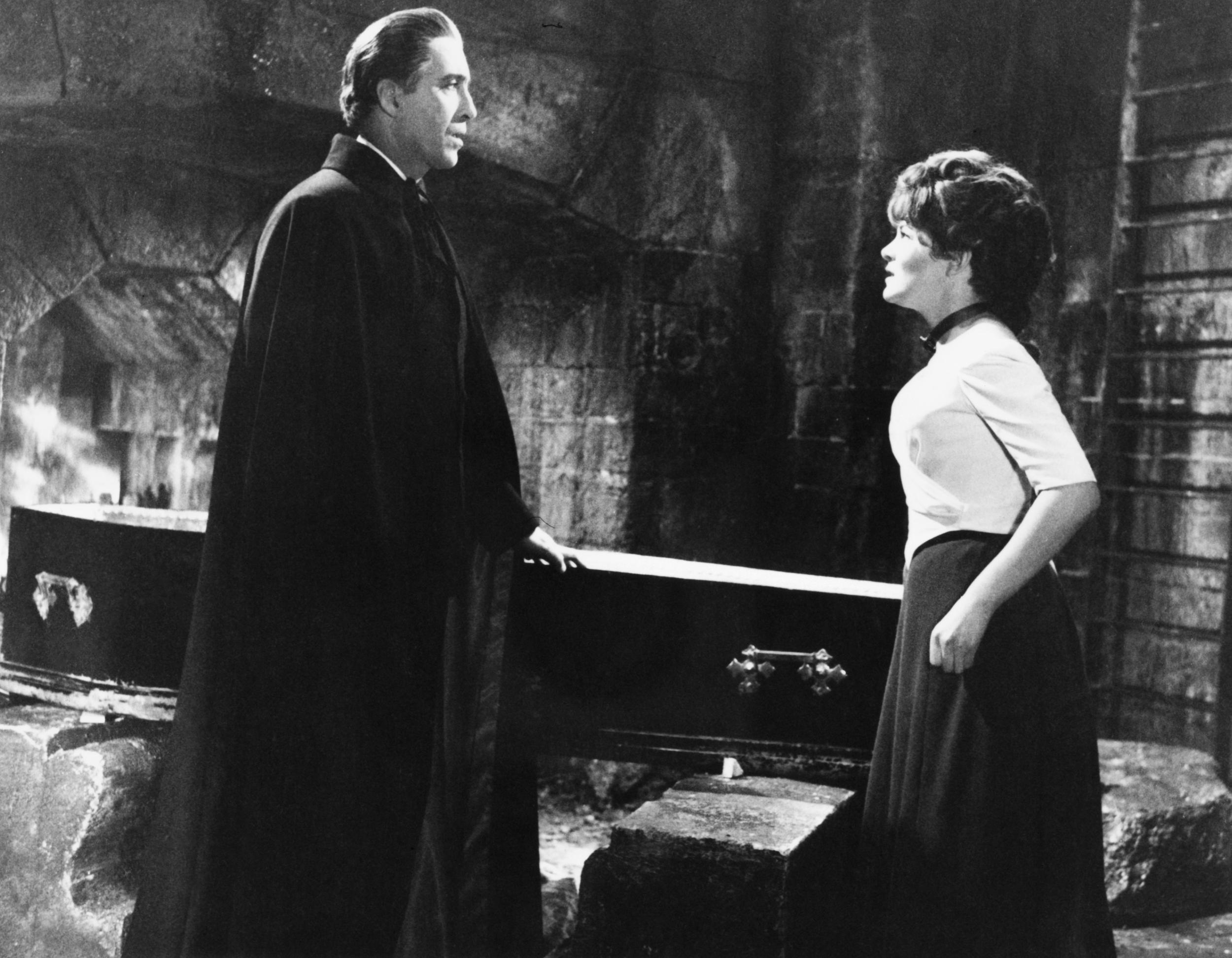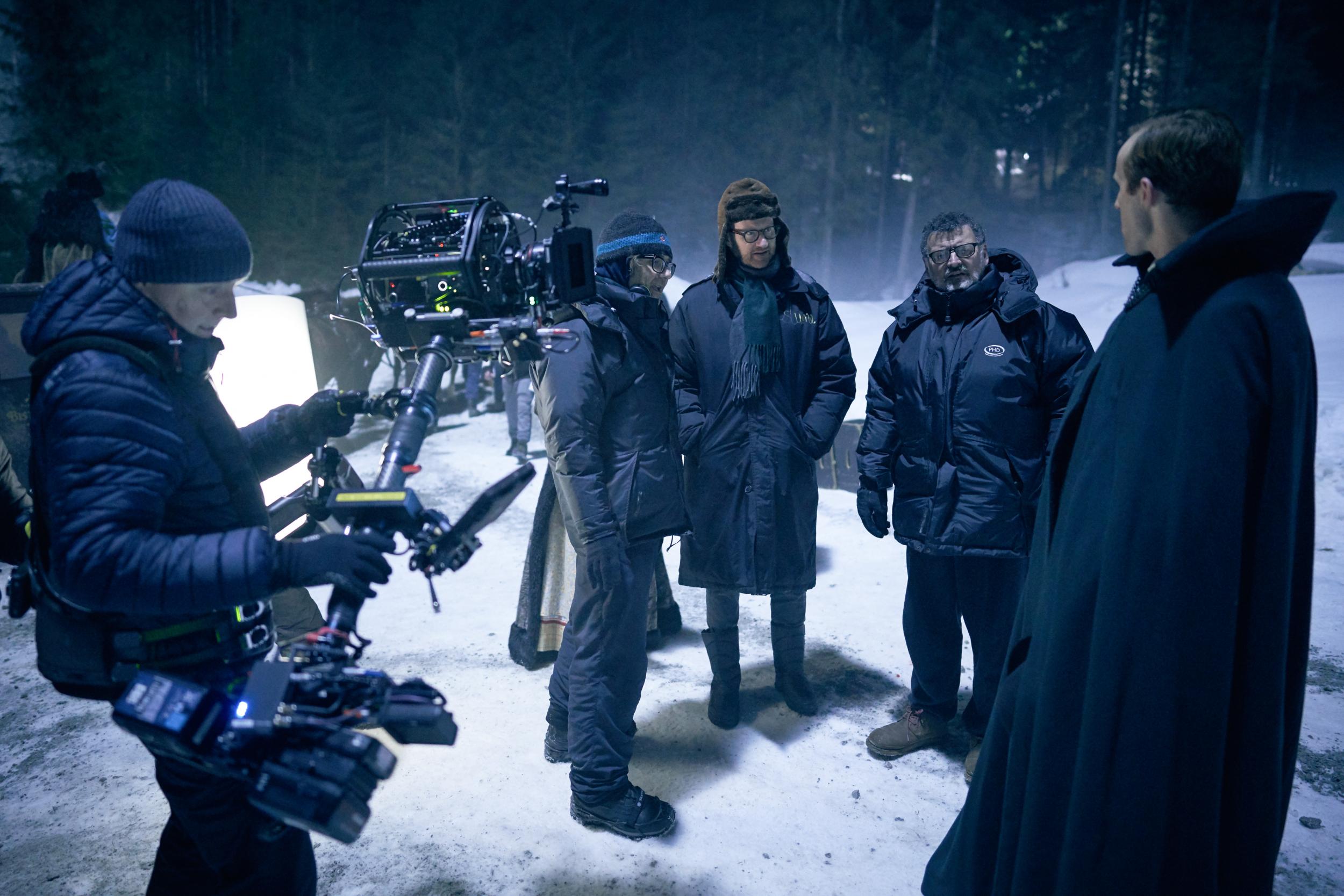How do you solve a problem like Dracula?
From Bela Lugosi to Buffy and Twilight to Hammer, by way of 1970s sexploitation and the German avant-garde, the vampire myth has been filmed in countless different ways. Can Sherlock creators Steven Moffat and Mark Gatiss find a fresh angle, asks Gerard Gilbert

Your support helps us to tell the story
From reproductive rights to climate change to Big Tech, The Independent is on the ground when the story is developing. Whether it's investigating the financials of Elon Musk's pro-Trump PAC or producing our latest documentary, 'The A Word', which shines a light on the American women fighting for reproductive rights, we know how important it is to parse out the facts from the messaging.
At such a critical moment in US history, we need reporters on the ground. Your donation allows us to keep sending journalists to speak to both sides of the story.
The Independent is trusted by Americans across the entire political spectrum. And unlike many other quality news outlets, we choose not to lock Americans out of our reporting and analysis with paywalls. We believe quality journalism should be available to everyone, paid for by those who can afford it.
Your support makes all the difference.Aspiring screenwriters could be forgiven for feeling a stab of envy at the ease with which Steven Moffat and Mark Gatiss managed to get their new big-budget BBC1 version of Dracula off the ground.
“It started as a joke,” says Gatiss, who came to fame as part of The League of Gentlemen before writing for Doctor Who and co-creating BBC1’s Sherlock with Moffat. “We were shooting Sherlock series three, and we came back to London for an awards ceremony and I had just taken a picture of Benedict [Cumberbatch] in his cloak with his collar up in silhouette against Mrs Hudson’s doorway. I showed it to Ben Stephenson, who was the drama commissioner at the BBC, and I said, ‘It looks like Dracula doesn’t it?’ And he said, ‘Do you want to do that?’”
Over seven years later, their new three-part version of Dracula hits our screens on New Year’s Day, showing on consecutive nights. Its cast features Danish actor Claes Bang in the title role, acclaimed stage actor John Heffernan as Jonathan Harker, the English solicitor who has the misfortune of visiting Dracula’s castle, and Dolly Wells as a wise-cracking nun (Gatiss himself has a minor role).
Dracula, of course, has been a stock horror figure since the Hungarian actor Bela Lugosi portrayed him in 1931, the vampire’s most famous iteration since Lugosi being Christopher Lee’s portrayal in the Hammer horror films of the late 1950s onwards. The 1970s saw both Andy Warhol and Werner Herzog have a bite at the myth, while Francis Ford Coppola’s operatic and misleadingly titled Bram Stoker’s Dracula (it is not actually all that faithful to the book) had Gary Oldman as the blood-sucking aristocrat. Since then, he’s been tamed enough to become a children’s cartoon character, Count Duckula, as well as an antagonist for Buffy the Vampire Slayer, while Robert Pattinson’s non-threatening blood-sucker was the teen heartthrob of the Twilight series. And those are just the tip of the iceberg, let alone the Halloween costume industry.
Unsurprisingly, then, Gatiss and Moffat couldn’t quite take seriously the idea of resuscitating such a hackneyed icon of horror fiction. “But then we started thinking we could actually do something with Dracula,” says Moffat, when we meet in the bowels of the British Film Institute in London ahead of a premiere screening. “And we started liking it so much that we went and pitched it to Sue. And she liked it and so here we are…”
“Sue” is Moffat’s wife, Sue Vertue, but, more to the point, she is also the producer who runs Hartswood Films, which made Sherlock. So why have Moffat and Gatiss, who became close while writing for Doctor Who and sharing train journeys to and from London and Cardiff, finally decided to engage seriously with their Dracula?
“These things go in cycles,” says Gatiss. “And because we’ve been through so many iterations of Twilight sorts of vampires, somehow it just felt right to be able to do castles and moonlight and capes. Horror should be transgressive. Horror over time becomes cosy. Dracula and Frankenstein, within 10 years [of their first screen portrayals] they were meeting up with Abbott and Costello…”
The castle they chose as Dracula’s, Orava Castle in Slovakia, betrays the duo’s keen sense of the material’s artistic legacy, as it was here that Nosferatu, the first (unofficial) screen version of Bram Stoker’s 1897 novel, was filmed in 1921. FW Murnau’s silent movie, which only just survived a brush with Stoker’s copyright lawyers, is a masterpiece of German Expressionist cinema – and remains properly scary to this day.

Nosferatu’s Dracula figure (named Orlok) was played by Max Schreck, the character’s skull-like features and grotesquely extended fingers faithfully recreated by Werner Herzog when he cast Klaus Kinski in his 1979 German-language film, Nosferatu the Vampyre. Moffat and Gatiss, however, had a very different model in mind when they cast their Dracula – the French matinee idol Louis Jourdan.
“A big influence on us was the 1977 Louis Jourdan version on the BBC,” says Gatiss. “It’s a very telling piece of casting because he’s in his fifties, he’s a matinee idol, but he’s very particularly not British. Claes has an urbanity that we were looking for.”
The 52-year-old Danish actor is perhaps best known in this country, if at all, for The Square, in which he co-starred with Elisabeth Moss as a bullying art gallery director whose life goes into freefall after his phone is stolen. Bang is superbly menacing in the role.
“I watched The Square and Claes looks like Bela Lugosi and Christopher Lee had an assignation and somehow produced a child. I thought, ‘We’re not going to get better than that,’” says Moffat, who had asked his casting director, Kate Rhodes James, to find an actor in their forties or fifties who looked like Dracula, sounded like Dracula, was immensely charismatic and not necessarily a well-known face. “And we don’t want him to look English,” he adds.
Bang fulfils his brief in Dracula. Suave, seductive and glowering, as well as tall, dark and handsome, he’s in the mould of Louis Jourdan and Frank Langella, who played Dracula as a romantic hero in John Badham’s 1979 movie Dracula. Bram Stoker’s vampire was not so good-looking, says Moffat. “In the book he’s got a long white moustache. In fact, the version of Dracula we all venerate and know is actually from a [1924] stage play based on Dracula, which Bela Lugosi appeared in. He was a sex symbol of his time.”
Moffat has already revived one Victorian horror classic for television, his 2007 ITV reworking of Robert Louis Stevenson’s Strange Case of Dr Jekyll and Mr Hyde, while Gatiss’s gothic imagination was surely nourished by living next door to the Edwardian psychiatric hospital in Sedgefield, County Durham, where his father worked. Hammer Horror films were a youthful passion of both men.
And while faithful to Stoker in many respects, Moffat and Gatiss have also taken liberties with the material, as you might hope and expect from the creators of Sherlock. They’ve built up the part of a nun, , and there are various surprises that can’t be divulged here. The largest difference with the book, however, is the part played by Dracula himself.
“The big challenge we set ourselves was to make Dracula the central character of his own story for the first time,” says Gatiss. “If you know the book, he’s in the first third and hardly in it again. What we had to give him is a personality that spans four centuries, and if you are effectively immortal, I hope to God you’ve got a sense of humour.”

And this is indeed a droll Dracula. One potentially higher hurdle for a vampire in a post-#MeToo era might be, given that vampirism is widely accepted as a metaphor for sex, his predatory taste for young women in low-cut dresses. Moffat vehemently disagrees with my assessment of the Count’s tastes.
“It’s not true,” he says. “Which ones are you talking about?”
The Hammer films, I suggest, which by the end were verging on sexploitation.
“But every young man in those Hammer movies takes his top off,” he counters. “The Hammer movies wanted to get everyone into the cinema so, yes, the girls would be in a low-cut dress or taking their top off, but the blokes would be too. And if you look at the first Hammer one, the person Dracula looks most turned on by biting was Peter Cushing. There’s a whole homoerotic moment. But he’s eating them, not dating them. Dracula is not so much bisexual as bi-homicidal.”
Dracula begins on New Year’s Day on BBC1 at 9pm
Join our commenting forum
Join thought-provoking conversations, follow other Independent readers and see their replies
Comments